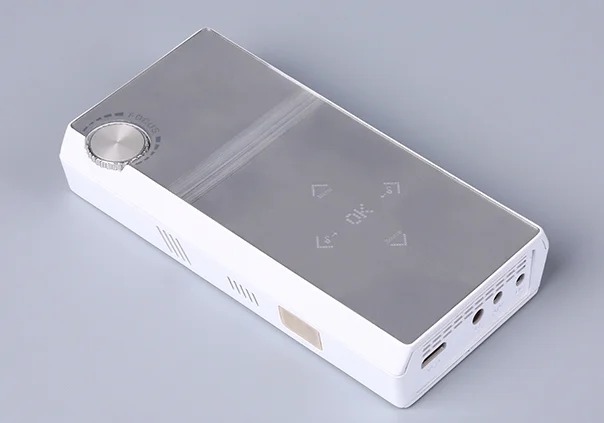Flexible, Tough, or High-Performance: Plastic 3D Printing Made Easy
Introduction to Versatile Plastic 3D Printing Solutions
Whether you need flexibility, impact resistance, or industrial-grade performance, plastic 3D printing offers tailored solutions for every application. With a wide selection of engineered thermoplastics, it's easier than ever to produce durable, precise components on demand.
At Neway Aerotech, our plastic 3D printing services support functional prototypes and end-use parts using materials from TPU to carbon fiber-reinforced nylon.
Plastic 3D Printing Technology Overview
Classification of Plastic 3D Printing Processes
Process | Layer Thickness (μm) | Strength (MPa) | Flexibility | Common Use Cases | Notes |
|---|---|---|---|---|---|
FDM | 100–300 | 30–85 | Moderate | Fixtures, enclosures, functional parts | Compatible with reinforced filaments |
SLA | 25–100 | 35–60 | Low | Cosmetic models, medical devices | Very smooth finish, brittle material |
SLS | 80–120 | 45–75 | High | Clips, gears, living hinges | No support structures required |
MJF | 70–100 | 50–80 | Moderate | Production parts, structural prototypes | Excellent strength-to-weight balance |
Note: Actual part performance depends on material grade, print parameters, and post-processing.
Process Selection Strategy
FDM: Ideal for rigid and reinforced parts using carbon fiber, PETG, or ABS materials.
SLA: Best for fine detail prototypes where surface finish and precision matter most.
SLS: Excellent for parts that require flexibility, durability, and mechanical interlocks.
MJF: Optimal for functional parts that need consistent strength and surface quality.
Plastic Material Capabilities
Material Matrix: Flexible, Tough, or High-Performance
Material | Tensile Strength (MPa) | Elongation at Break (%) | H.D.T. (°C) | Key Benefit | Application Examples |
|---|---|---|---|---|---|
TPU | ~30 | >300 | ~60 | Elastic, tear-resistant | Seals, gaskets, wearables |
PETG | ~50 | ~25 | ~70 | Tough and chemically resistant | Brackets, medical test jigs |
ABS | ~45 | ~10 | ~96 | Impact-resistant, machinable | Enclosures, structural assemblies |
Nylon PA12 | ~50 | ~20 | ~180 | Semi-flexible, abrasion-resistant | Snap-fit parts, housings, UAV shells |
Carbon Fiber Nylon | ~85 | ~8 | ~150 | High stiffness and thermal stability | Mounting frames, drone arms, machine brackets |
Material Selection Strategy
TPU: Chosen when elasticity, cushioning, or shock absorption is critical in moving or wearable designs.
PETG: Applied where parts must resist mechanical impact and chemical exposure while remaining moderately flexible.
ABS: Preferred for enclosures requiring dimensional accuracy and moderate impact strength.
Nylon PA12: Excellent for stress-carrying parts that experience flex and wear during repeated use.
Carbon Fiber Nylon: Used for structural components requiring rigidity, fatigue resistance, and temperature stability.
Case Study: Carbon Fiber Nylon and TPU Hybrid Parts for Robotics
Project Background
A customer in the robotics industry required custom sensor housings and flexible cable management clips. The goal was to integrate stiffness and elasticity in one functional prototype assembly.
Manufacturing Work Flow
Material Assignment: Carbon fiber nylon for the housing shell; TPU for strain-relief clips.
3D Modeling: Interfacing features co-designed for friction-fit without adhesives; tested for 10,000 cycle bend life.
FDM Printing: Both materials printed with hardened nozzles and dual-extruder setup for precise multi-material control.
Post-Processing: Minimal sanding and manual support removal; TPU sections heat-treated at 60°C for final shape stability.
Assembly Test: Clips flexed to 180° without tearing; housings withstood 20 Nm load during robotic arm deployment.
Post Process
TPU Shaping: Thermoformed to desired arc and stabilized under controlled airflow.
Shell Finishing: Carbon fiber nylon smoothed with media tumbling to improve tactile feel.
Dimensional Check: Verified with 3D scanning, maintaining ±0.1 mm tolerances on functional dimensions.
Results and Verification
Both materials performed within spec across all mechanical and thermal tests, with zero delamination or joint fatigue over 10,000 cycles.
Dimensional tolerances met ±0.1 mm repeatably, allowing modular fit between rigid housing and flexible clip without adhesives.
Prototype-to-field-ready conversion time was under 6 days, enabling the customer to proceed with low-volume production immediately.
The hybrid material strategy reduced weight by 28% while preserving required stiffness and cable bend radius.
FAQs
What’s the best plastic 3D printing material for flexible yet strong parts?
Can you combine multiple materials in one plastic 3D printed assembly?
How durable are carbon fiber reinforced 3D printed parts under real-world load?
What surface finishes are available for engineering plastic components?
Can flexible parts like TPU be sterilized or heat-treated?

